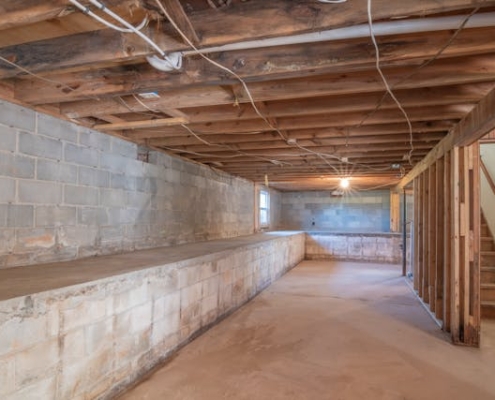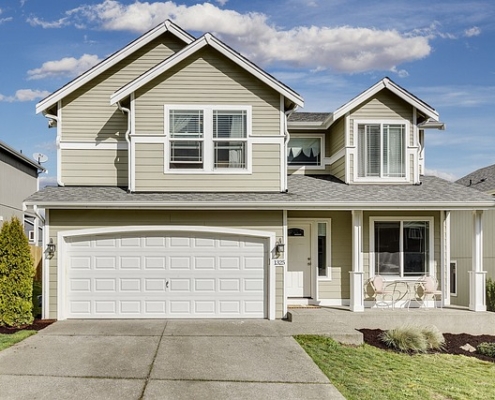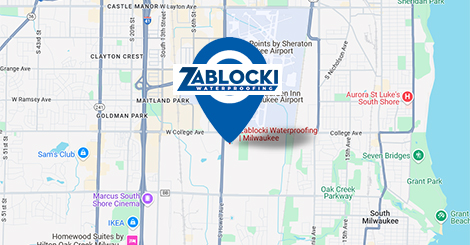 A wet basement can be a homeowner’s worst nightmare. Not only is it a headache to try and fix at the moment, but it can also lead to expensive foundation repairs down the road. That’s why so many homeowners are turning to sump pumps for basement waterproofing.
A wet basement can be a homeowner’s worst nightmare. Not only is it a headache to try and fix at the moment, but it can also lead to expensive foundation repairs down the road. That’s why so many homeowners are turning to sump pumps for basement waterproofing.
In this blog post, we will discuss what a sump pump is, how it works, and why it is the gold standard of basement waterproofing. We will also talk about how a sump pump is installed, as well as some of the other methods homeowners can use to waterproof their basements. Finally, we will talk about what to do when you’re ready to start exploring your basement waterproofing options.
Jump to article sections:
- What is a Sump Pump and How Does It Work?
- Sump Pumps: The Gold Standard of Basement Waterproofing
- Sump Pump Maintenance
- Other Basement Waterproofing Methods
- Professional Basement Waterproofing Services
1. What is a Sump Pump and How Does It Work?
So, what is a sump pump? A sump pump is a small device that is installed in the lowest point of your basement. The sump pump’s job is to remove water that has entered your basement and accumulated in a receptacle called a “sump pit” and pump it out and away from your home through a discharge pipe. Sump pumps are very effective at keeping basements dry, and they are often used in combination with other basement waterproofing systems.
There are two main types of sump pumps: submersible and pedestal. Submersible sump pumps are submerged in the water that has accumulated in the sump pit, and they are typically more powerful than pedestal sump pumps. Pedestal sump pumps are not submerged in the water, and they are good for basements that tend to flood only occasionally.
2. Sump Pumps: The Gold Standard of Basement Waterproofing
Now that we know what a sump pump is and how it works, let’s talk about why it is the gold standard of basement waterproofing. Sump pumps are so effective because they remove water before it has a chance to cause damage to your basement walls or foundation.
Prevents Water Buildup
The main purpose of a sump pump is to prevent water buildup in your basement. This is especially important during heavy rainstorms or if you live in an area with high water table levels. Without a sump pump, excess water could seep into your basement and cause damage to your belongings and the foundation of your home.
The sump pump works by collecting water through a series of drains or a perimeter drainage system around the basement. It then pumps this water out and away from your home, effectively keeping your basement dry and preventing water damage.
Reduces Moisture Levels
Excess moisture in your basement can lead to mold growth, which can be harmful to both your health and the structural integrity of your home. Sump pumps help to keep moisture levels in check by removing any standing water that could contribute to increased humidity.
In addition, sump pumps also have the option for a built-in dehumidifier, which further helps to reduce moisture levels in your basement. This not only keeps your space dry, but it also helps to prevent any musty odors that can come with a damp environment.
Saves Money on Repairs
As mentioned, water damage caused by flooding in your basement can lead to costly repairs for both your home and personal belongings. By investing in a sump pump, you can save yourself from these expenses and potential headaches down the road.
With a sump pump installed, you won’t have to worry about repairing or replacing damaged items due to flooding. You also won’t have to deal with the hassle of cleaning up after a flood and potentially mold growth as well.
Low Maintenance
Sump pumps are relatively low maintenance devices. As long as they are installed correctly and regularly maintained, they can last for many years without any major issues. Some simple tasks to keep your sump pump running smoothly include regularly checking and cleaning the pump’s inlet screen, testing the backup battery if applicable, and scheduling annual professional inspections.
Versatile
Another benefit of sump pumps is their versatility. They can be used in a variety of situations, including homes with basements that are prone to flooding, crawl spaces that experience water buildup, or even areas with high water tables.
3. Sump Pump Maintenance
Regular maintenance of your sump pump, including inspecting and cleaning the inlet screen and scheduling professional inspections, can help keep your sump pump in good working condition. Also, be sure to test the backup battery (if applicable) and keep an eye out for any unusual noises or malfunctions.
4. Other Basement Waterproofing Methods
 While sump pumps (usually) work great at removing water from a basement, you do have other options for basement waterproofing systems. Interior or exterior drain tile — sometimes called a “French drain” — is an effective solution that often works in tandem with a sump pump or floor drain to drive water away from the home.
While sump pumps (usually) work great at removing water from a basement, you do have other options for basement waterproofing systems. Interior or exterior drain tile — sometimes called a “French drain” — is an effective solution that often works in tandem with a sump pump or floor drain to drive water away from the home.
You can also employ the use of an exterior waterproofing membrane around your home’s foundation; ensure your gutters and downspouts are working properly; and landscape to ensure water drains away from your home.
5. Professional Basement Waterproofing Services
While sump pumps and other waterproofing methods can be effective, it’s always best to seek professional help when dealing with basement waterproofing. A professional basement waterproofing company will have the experience, tools, and knowledge to properly identify and address any issues with your home’s foundation and basement.
If you’re serious about keeping your basement dry and live in the Milwaukee area, contact Zablocki Waterproofing today. We are experts in Milwaukee basement waterproofing, and we can help you find the best solution for your home. Call Zablocki Waterproofing today to schedule a free consultation.
 By Dale Granbois, co-owner of Zablocki Waterproofing
By Dale Granbois, co-owner of Zablocki Waterproofing
Dale Granbois is the proud co-owner of Zablocki Waterproofing, the premier basement waterproofing and foundation repair service provider in Milwaukee. Our team of experienced professionals offer a variety of services from complete basement waterproofing solutions to structural foundation repairs -all designed to keep your home or business safe and dry. Let us save you from expensive headaches caused by water damage and give you peace of mind with a safe and secure property. Contact us today for more information!





